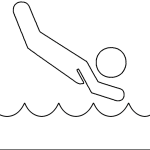Multiple Disabilities
Overview
The multiple disabilities category refers to
concomitant impairments (such as intellectual disability-blindness or intellectual disability-orthopedic impairment), the combination of which causes such severe educational needs that cannot be accommodated in special education programs solely for one of the impairments. Multiple disabilities does not include deaf-blindness. (IDEA)
Two percent or less of students qualifying for services under the IDEA have a multiple disabilities designation (National Center for Education Statistics, 2022).
The multiple disabilities category represents the eighth most prevalent type of disability among school-aged children. The term multiple disabilities refers to the combination of coexisting impairments causing severe educational needs that cannot be accommodated for one impairment only. IDEA states that these disabilities can be “classified as orthopedic, emotional or behavioral, or sensory disabilities” (Baron, 2022, pg. 1). For example a student who has an intellectual disability (ID) with vision impairment falls into this category. The only dual disability that does not fit into this category is deaf-blindness because it has its own category under IDEA, and the only time that deaf-blindness does fit into this category occurs when the student has an additional disability (Kansas State Department of Education, 2020).
Strengths
Wide and varied, the strengths of the students with multiple disabilities all depend on the types and severity of the disability types. For instance, students with multiple physical impairments may not have the strength to move much, but they could have very strong academic skills or other strengths. They may have a strong sense of humor, may be very loving and social, or have technical skills. Students without physical impairments may have physical strengths and other types of strengths depending on their disability types.
Needs
Students with multiple disabilities share some common needs and many times, their needs can be met in a normal school setting. They may struggle with social interactions, including interactions that require extended attention, mobility, and oral speech. Because of their disability, they also may be absent from school for long periods of time, resulting in missed content, or struggle with their medications (Multiple Disabilities).
 Reflection
Reflection
Supporting Students with Multiple Disabilities
The section below explains some strategies for supporting students experiencing multiple disabilities. Based on what you have read so far, what strategies do you think might be useful for supporting students experiencing multiple disabilities?
Common Teaching Strategies
Paths to Literacy offers the following ways to help promote learning among students with multiple disabilities:
- Promote development of cognitive skills through active participation with hands-on materials (e.g. exploring big/little, wet/dry, heavy/light).
- Establish a recognized means of communication that all members of the team and family can consistently reinforce. For example, if a child uses objects to communicate choices (i.e. selecting one from a choice of two items at snack time, such as an apple and a cracker), then these objects should be incorporated into literacy activities.
- Vocabulary should be familiar to the child and should be presented in a clear and consistent way. To the extent possible, using the same terms across settings, including home and school, will support learning. Are they shoes or sneakers? Belly or tummy? These may seem like small differences, but to someone who is just developing formal language skills, consistency may be helpful.
- Provide exposure to a wide variety of literacy materials, using real objects and adaptations to make them as accessible as possible to an individual student. Be sure that books and other literacy materials are available at home and in the classroom, including storyboxes, experience books (written by the student as well as by others in the class), and books with braille, tactile symbols, and real objects.
- Avoid miniature representations, as these are often not meaningful to children with visual impairments and additional disabilities. For example, a section of a seat belt may be a better representation of a car than a small, matchbox car. Similarly, with a weather chart, cotton balls for clouds or snow and glue drops for rain are not as meaningful as a wool hat or an umbrella.
- Create routines that sequence events with a clear beginning, middle, and ending. These can be routines of daily living, such as brushing teeth, or they can be activities, such as making a snack. Learning to follow a sequence of events helps to establish an understanding of what will come next. Tactile books about basic routines are a good way to make early literacy experiences meaningful. (Instructional Strategies for Students with Multiple Disabilities)
 Deeper Dive
Deeper Dive
For more information about multiple disabilities, review the following resources:
References
Baron, A. (2022). Multiple disabilities: Characteristics, prevalence & causes. Study.com. Retrieved from https://study.com/learn/lesson/multiple-disabilities-characteristics-prevalance-causes.html
Kansas State Department of Education. (2020). Kansas State Department of Education Fact Sheet – Multiple Disabilities. Retrieved from https://www.ksde.org/Portals/0/ECSETS/FactSheets/FactSheet-SpEd-MD.pdf
National Center for Education Statistics. (2022). Students With Disabilities. Condition of Education. U.S. Department of Education, Institute of Education Sciences.
U.S. Department of Education. (2018). Sec. 300.8 Child with a disability. Retrieved from https://sites.ed.gov/idea/regs/b/a/300.8
is concomitant impairments (such as intellectual disability-blindness or intellectual disability-orthopedic impairment), the combination of which causes such severe educational needs that they cannot be accommodated in special education programs solely for one of the impairments. Multiple disabilities does not include deaf-blindness
